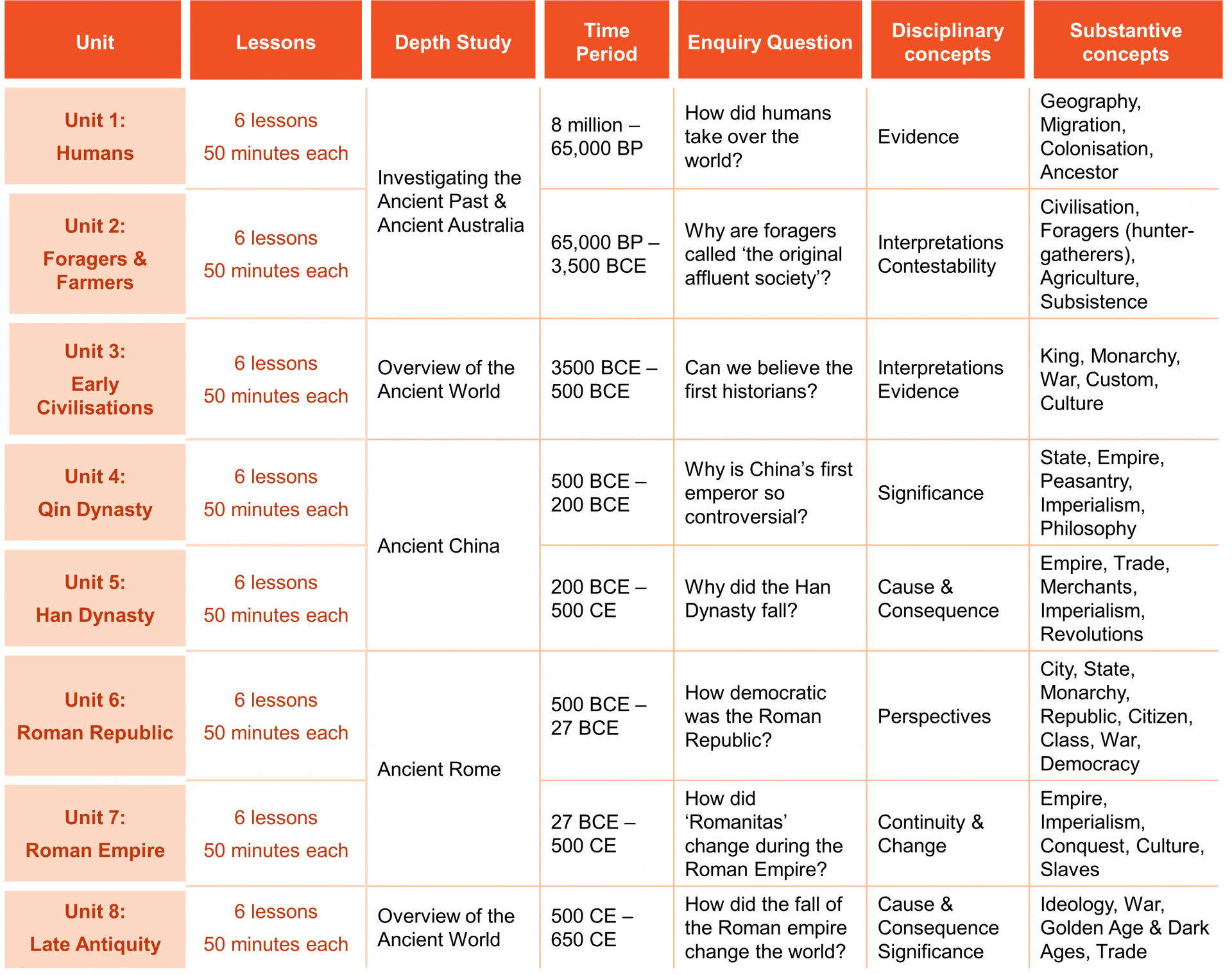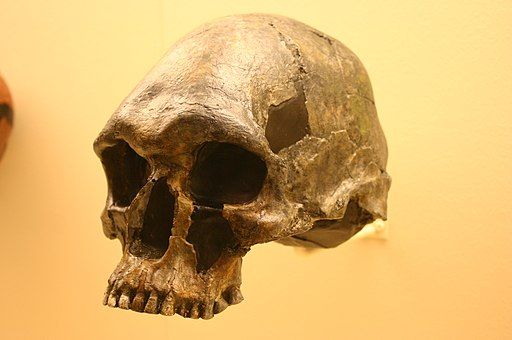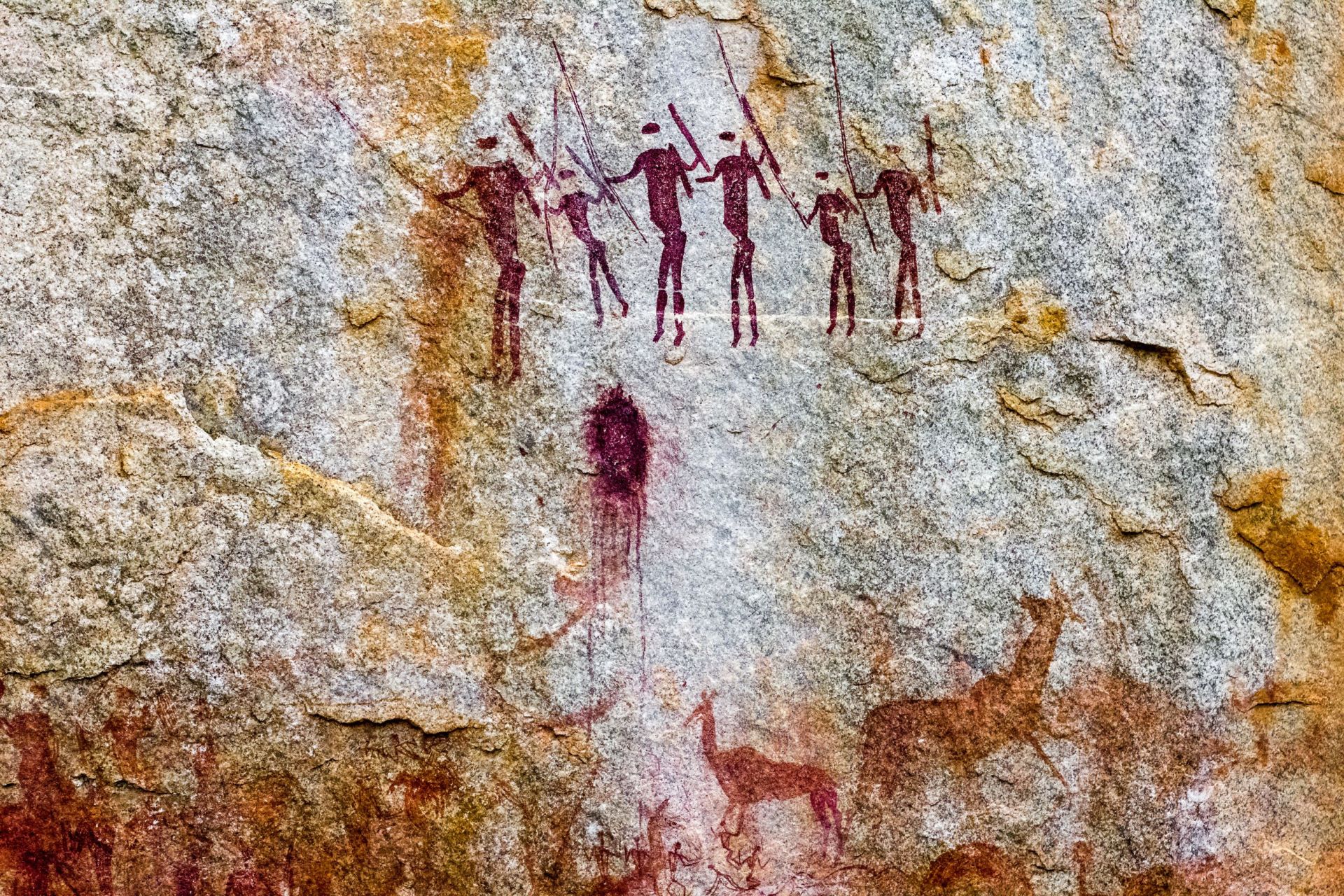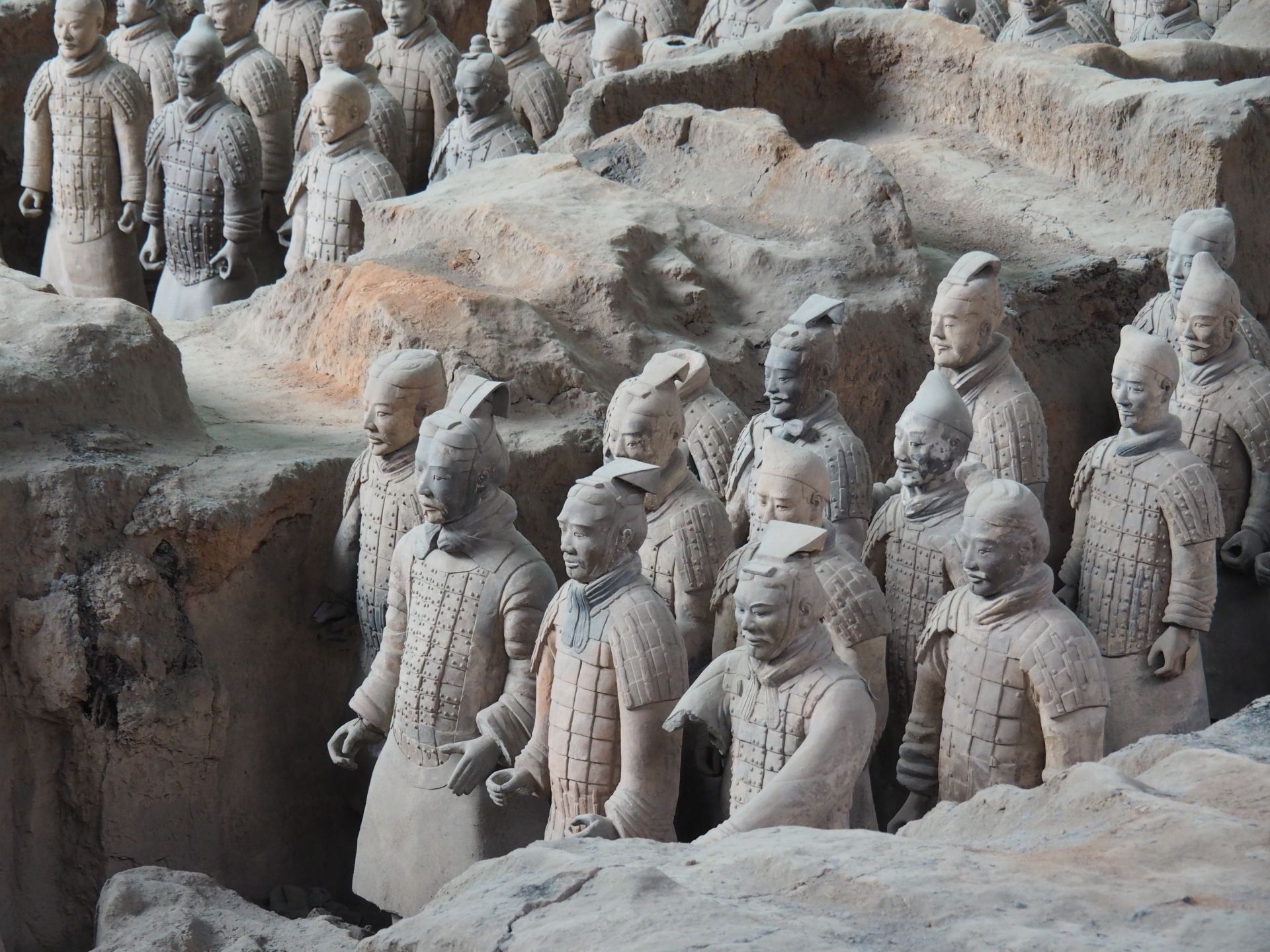Course Lessons
Scope and sequence
Year 7 History
Unit map
8 million - 60,000 years ago
Unit 1: Humans
How did humans take over the world?
This unit presents the Big History – a summary of how humanity began from the first humans 8 million years ago until the first Australians 65,000 years ago. The unit focuses students on a pivotal moment in human prehistory – when we left Africa in big numbers to colonise the world. Think of this unit as setting the stage on which the incredible drama of human history will play out.
This unit presents the Big History – a summary of how humanity began from the first humans 8 million years ago until the first Australians 65,000 years ago. The unit focuses students on a pivotal moment in human prehistory – when we left Africa in big numbers to colonise the world. Think of this unit as setting the stage on which the incredible drama of human history will play out.
65,000 years ago – 3,500 BCE
Unit 2: Foragers and Farmers
Why are foragers called ‘the original affluent society’?
Students are introduced to the agricultural revolution and its consequences - positive and negative. Over six lessons, students explore the spectrum of ancient foragers with a deep dive on ancient Australia. Students learn how historical perspectives have shifted over time towards a more nuanced understanding of different ancient societies around the world.
Students are introduced to the agricultural revolution and its consequences - positive and negative. Over six lessons, students explore the spectrum of ancient foragers with a deep dive on ancient Australia. Students learn how historical perspectives have shifted over time towards a more nuanced understanding of different ancient societies around the world.
3500 BCE – 500 BCE
Unit 3: Early Civilisations
Can we believe the first historians?
Historians interpret evidence from the past, but how much can we trust these interpretations? This unit examines the works of Herodotus and the Shūjīng to engage students in a discussion about what these interpretations can (and cannot) tell us about the first civilisations. We introduce the fertile crescent civilisations and give an overview of the different cultures from this time period.
Historians interpret evidence from the past, but how much can we trust these interpretations? This unit examines the works of Herodotus and the Shūjīng to engage students in a discussion about what these interpretations can (and cannot) tell us about the first civilisations. We introduce the fertile crescent civilisations and give an overview of the different cultures from this time period.
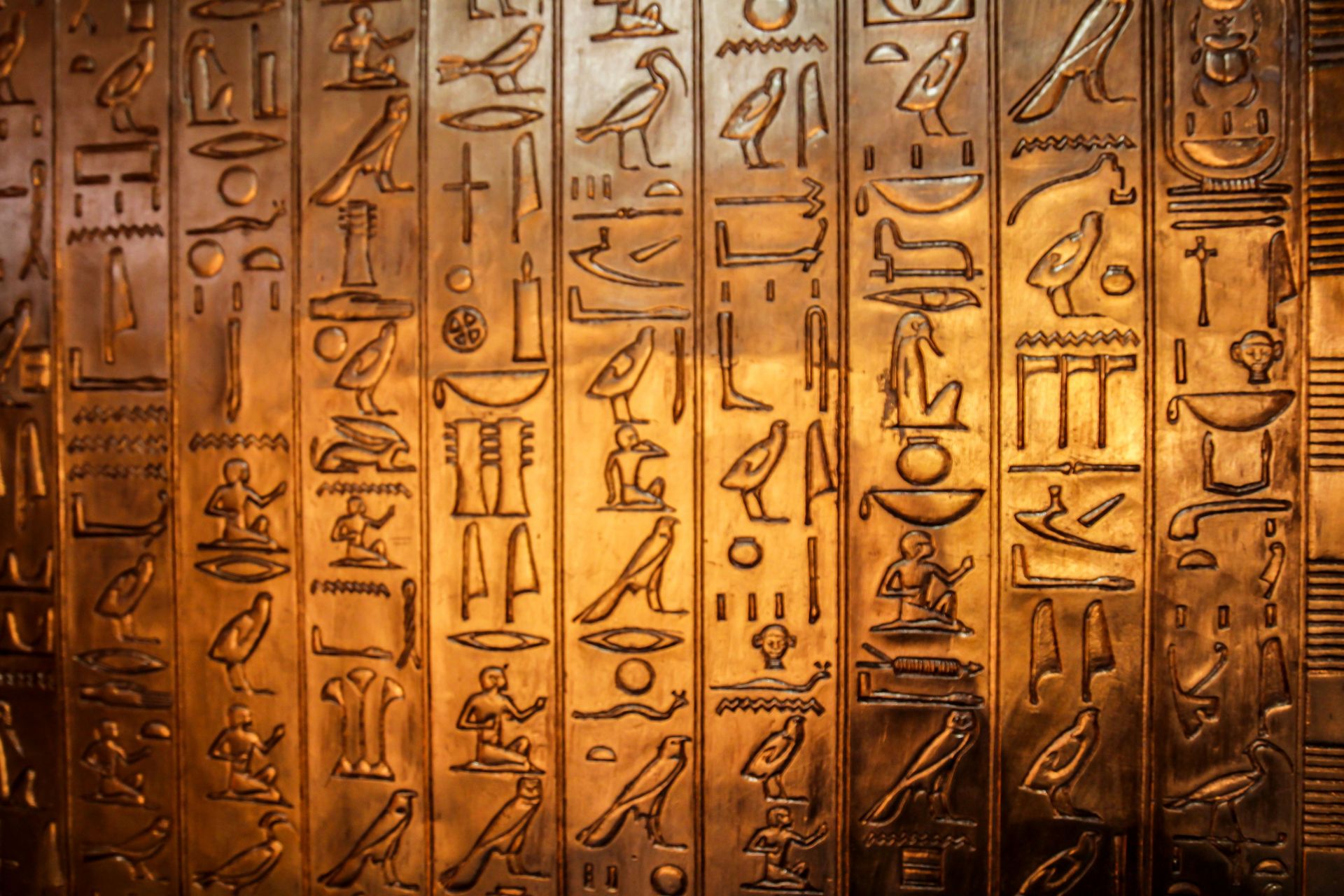
500 BCE – 200 BCE
Unit 4: Qin Dynasty
Why is China’s first emperor so controversial?
Qin Shi Huang: the ruthless emperor who burned books? The Qin Dynasty in China lasted only a few decades but had a deep influence on China, including being the namesake of the country. Students will explore the controversies of the Qin Dynasty as well as its legacy. Students will learn about the Mandate of Heaven and how scholars apply the ideology to explain the rise of each emperor. The births of Confucius and Sun Tzu are important to this period as they have a growing influence in later times once their philosophies gain followers.
Qin Shi Huang: the ruthless emperor who burned books? The Qin Dynasty in China lasted only a few decades but had a deep influence on China, including being the namesake of the country. Students will explore the controversies of the Qin Dynasty as well as its legacy. Students will learn about the Mandate of Heaven and how scholars apply the ideology to explain the rise of each emperor. The births of Confucius and Sun Tzu are important to this period as they have a growing influence in later times once their philosophies gain followers.
200 BCE – 500 CE
Unit 5: Han Dynasty
Why did the Han Dynasty fall?
The rise and fall of empires is a theme throughout ancient history. In this unit, students learn how to analyse the causes of empire collapse. The Han Dynasty was one of the most important and long-lasting dynasties in all of Chinese history. Chinese historians have spent more than a thousand years trying to understand why the dynasty collapsed. Students will learn key details of the Han Dynasty and practice using a framework to analyse cause and consequence in history.
The rise and fall of empires is a theme throughout ancient history. In this unit, students learn how to analyse the causes of empire collapse. The Han Dynasty was one of the most important and long-lasting dynasties in all of Chinese history. Chinese historians have spent more than a thousand years trying to understand why the dynasty collapsed. Students will learn key details of the Han Dynasty and practice using a framework to analyse cause and consequence in history.
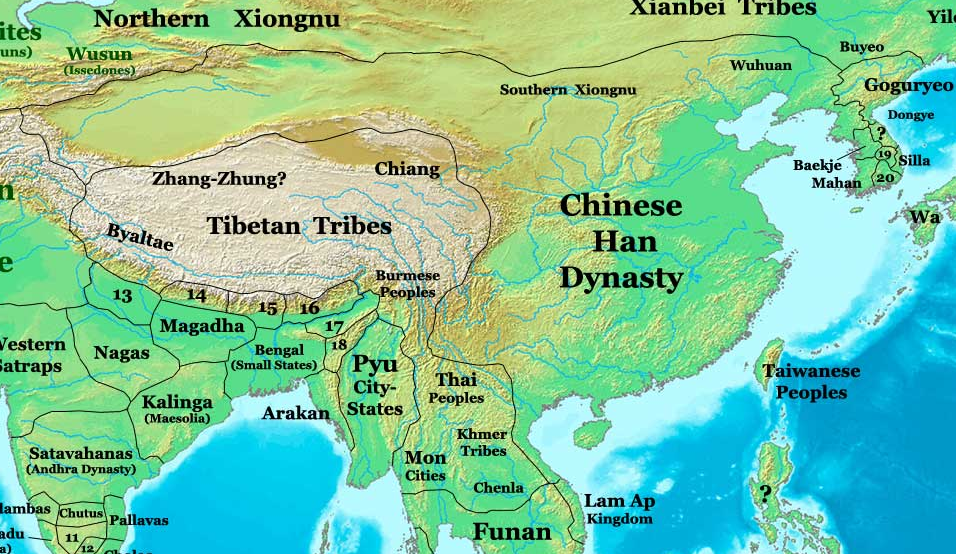
500 BCE – 27 BCE
Unit 6: Roman Republic
How democratic was the Roman Republic?
The Roman Republic was founded after the last king was overthrown. Great pride was placed in Rome's next government serving as a representative democracy. Students will analyse the societal dynamics in Rome to understand the power of the Republic's wealthiest families (the patricians) compared to the less powerful. Who had power and what were the roles of various Romans (and non-Romans) in this democracy?
The Roman Republic was founded after the last king was overthrown. Great pride was placed in Rome's next government serving as a representative democracy. Students will analyse the societal dynamics in Rome to understand the power of the Republic's wealthiest families (the patricians) compared to the less powerful. Who had power and what were the roles of various Romans (and non-Romans) in this democracy?
27 BCE – 500 CE
Unit 7: Roman Empire
How did ‘Romanitas’ change during the Roman Empire?
At its peak, the Roman Empire was the most extensive political and social structure in western civilisation. Essential to understanding the concept of ‘empire’ is understanding how empires expanded and how they gained new territories. Many different types of people were part of the Roman Empire at various points. Understanding the diversity of Romans can help explain the trajectory of the empire as well as its collapse.
At its peak, the Roman Empire was the most extensive political and social structure in western civilisation. Essential to understanding the concept of ‘empire’ is understanding how empires expanded and how they gained new territories. Many different types of people were part of the Roman Empire at various points. Understanding the diversity of Romans can help explain the trajectory of the empire as well as its collapse.
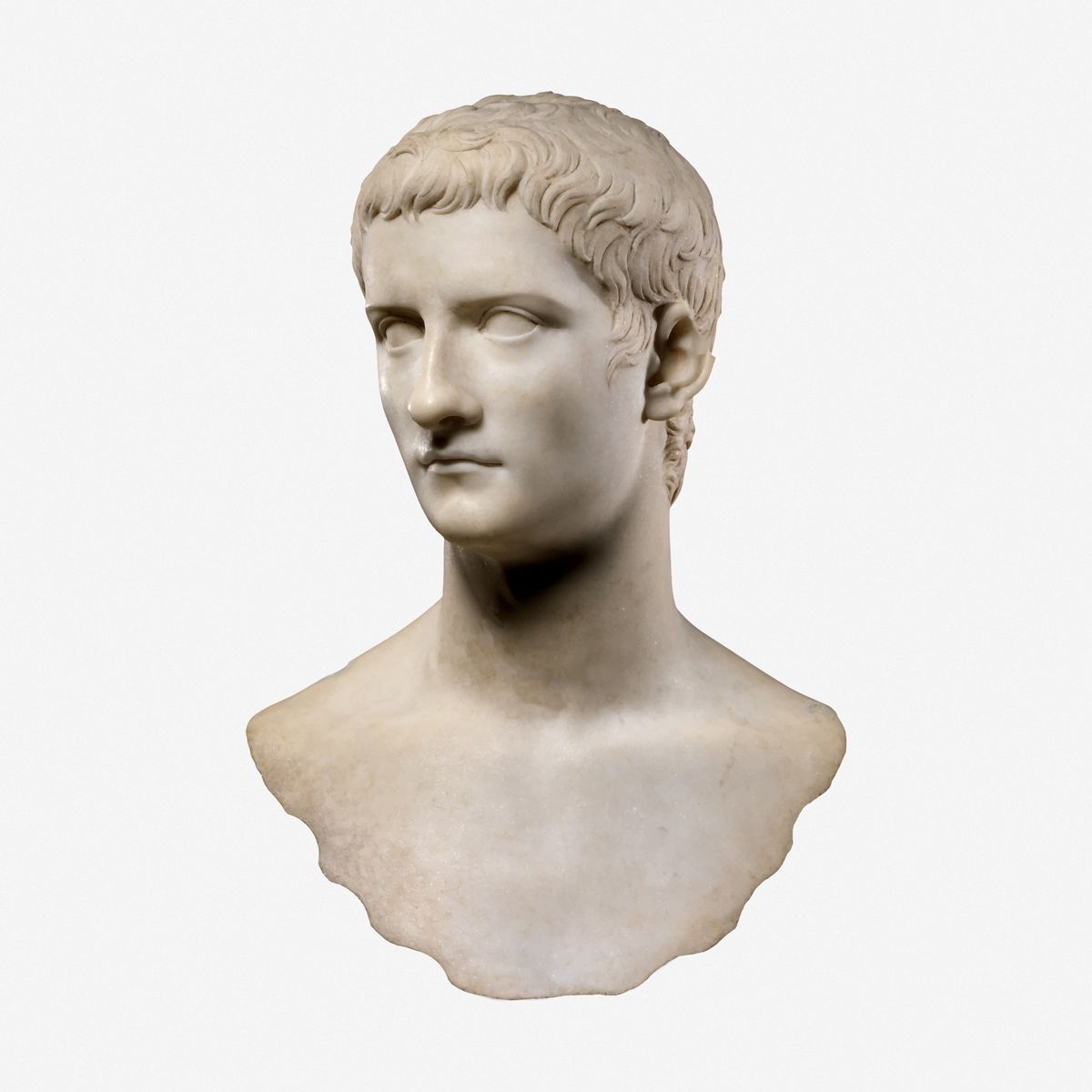
500 CE – 650 CE
Unit 8: Late Antiquity
How did the fall of the Roman empire change the world?
Students will practice analysing the consequences of major events in history – in this case, the fall of Rome. The collapse of the empire had major consequences for the Western world. This unit covers the decline and fall of Rome in western Europe up to the Muslim conquests of North Africa and Iberia in the late 7th - 8th centuries. This will set up students with a strong background for the Year 8 curriculum. Students will also learn that many areas around the world experienced little cultural impact from the Romans, and that Australia, the Americas, and Asia were also continuously changing throughout this period.
Students will practice analysing the consequences of major events in history – in this case, the fall of Rome. The collapse of the empire had major consequences for the Western world. This unit covers the decline and fall of Rome in western Europe up to the Muslim conquests of North Africa and Iberia in the late 7th - 8th centuries. This will set up students with a strong background for the Year 8 curriculum. Students will also learn that many areas around the world experienced little cultural impact from the Romans, and that Australia, the Americas, and Asia were also continuously changing throughout this period.
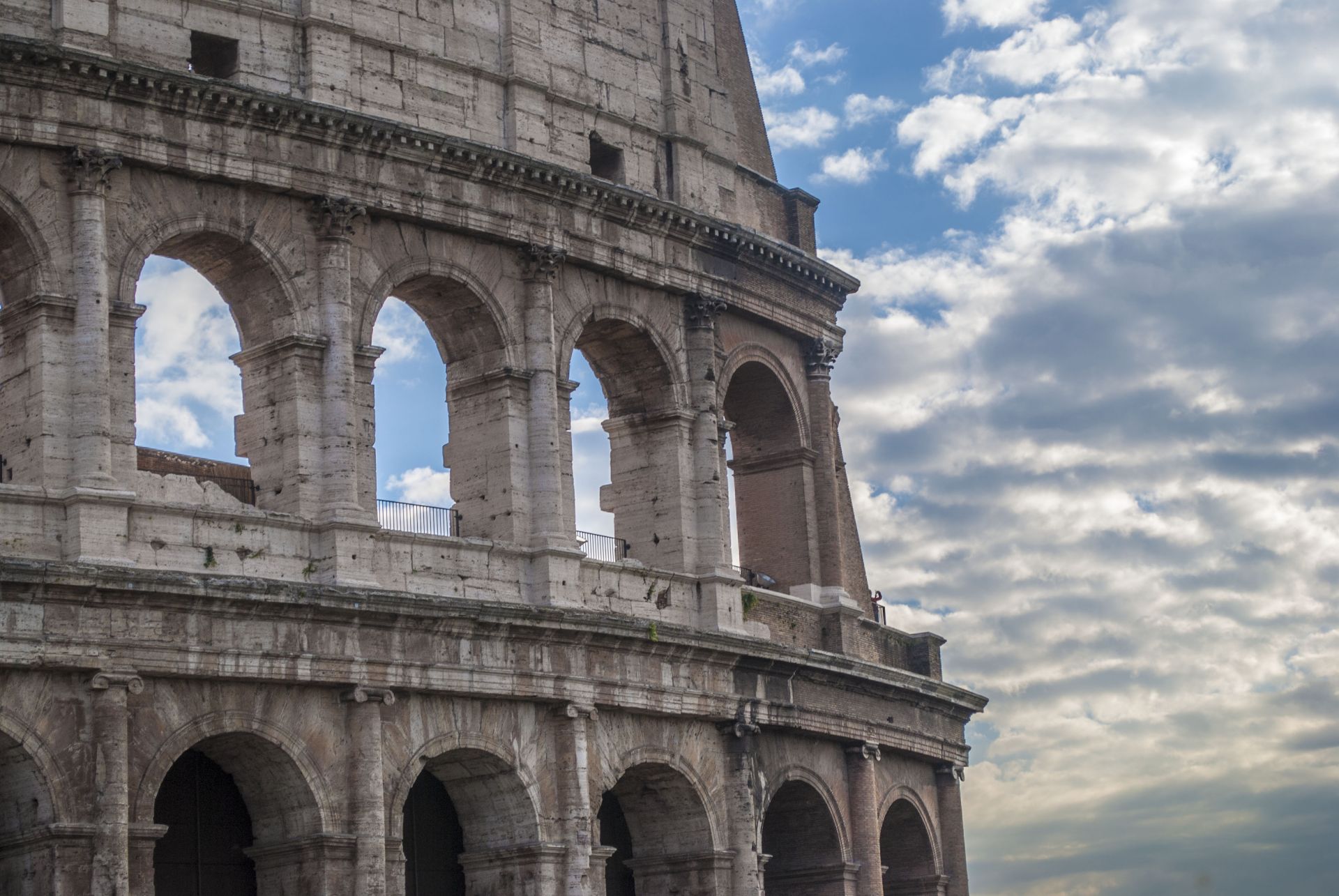
Curriculum alignment
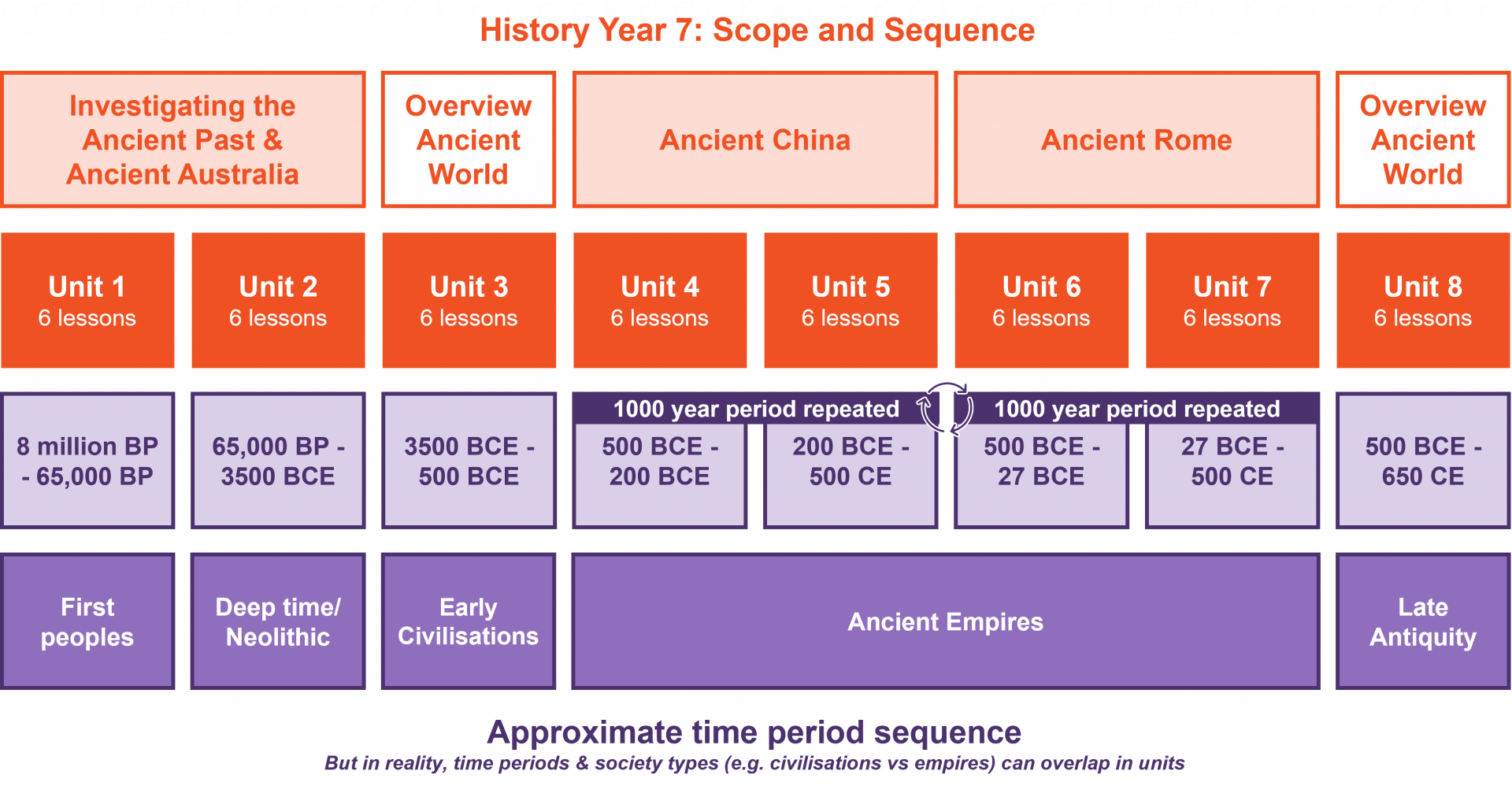
Unit sequence
